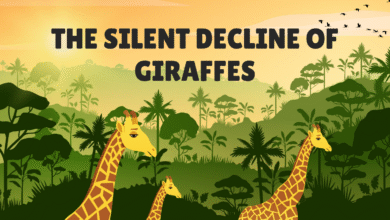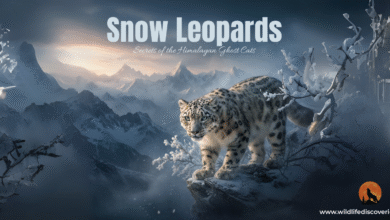Columbian Black Tailed Deer: Habitat, Behavior & Conservation
Ghost of the Pacific Rainforest

Black tail deer, might be one of the most overlooked big game species in North America, yet their characteristics and history make them truly remarkable. These deer may be half the size of mainland mule deer, but they have unique traits that deserve our attention. These adaptable creatures thrive throughout the Pacific Northwest, with California specimens weighing 77-144 pounds and their Alaskan counterparts reaching 96-164 pounds.
The Columbia blacktail deer’s role stands out in the prestigious deer slam hunting achievement, which the Boone and Crockett Club recognizes. These deer’s adaptability extends beyond their natural range. A group of just 40 deer from Oregon was released in Western Kauai, Hawaii between 1961 and 1966, and their population has grown to about 1,000. Hunters who put in the time on public lands where California blacktail deer live will find excellent opportunities for blacktail deer hunting. This piece explores these deer’s habitats, behaviors, and the conservation work that will shape their future.
Understanding the Columbian Blacktail Deer
The Columbia blacktail deer stands out as one of North America’s deer family’s most unique members. These mysterious creatures deserve a closer look to understand their special role in the ecosystem.
What makes them different from other deer species?
Columbia blacktail deer have several unique physical traits that separate them from other deer species. Their most recognizable feature – a tail that is black from tip to rump – gives them their name. These deer are smaller and darker than mule deer, with shorter ears and a more compact body.
These deer behave differently from other species. They prefer to stay hidden and rely on stealth rather than speed to avoid danger. Their secretive nature makes them hard to spot in the wild.
The deer’s antlers show a distinct pattern too. They have evenly forked antlers that look different from white-tailed deer’s single-beam antlers with extending tines. Their hooves show clear differences between males and females – males have substantially longer and broader hooves.
Recognized subspecies and their traits
Scientists recognize two main subspecies of blacktail deer. The Columbia blacktail deer (Odocoileus hemionus columbianus) lives from northern California through Oregon, Washington, and into southern British Columbia. The Sitka black-tailed deer (Odocoileus hemionus sitkensis), also known simply as Sitka deer, makes its home in coastal areas from northern British Columbia through southeastern Alaska.
These related subspecies have clear differences. Columbia blacktail deer grow larger than their Sitka cousins, and mature bucks can weigh between 150-200 pounds. Their rump patches are more noticeable than those on Sitka black tail, though not as prominent as mule deer’s patches.
Genetic differences from mule and white-tailed deer
The sort of thing I love about these deer is their genetic makeup. Black tail deer’s genetic code differs from mule deer by about 7.7% – a gap similar to what we see between many closely-related North American mammal species.
DNA studies show something remarkable. The genetic gap between mule deer and blacktail deer runs 6-8% – one of the biggest differences that ever spread through a single mammal species. Scientists have found these differences across various DNA markers, including mitochondrial DNA, allozymes, Y chromosome markers, microsatellites, and single nuclear polymorphisms.
Modern classification still lists blacktail deer as mule deer subspecies. Yet their substantial genetic differences hint at a complex history that keeps scientists and nature enthusiasts fascinated.
Where Columbian Black Tailed Deer Live and Thrive?
The Pacific coast of North America is home to an incredible number of black tail deer. These adaptable creatures thrive in a variety of ecosystems from coastal rainforests to mountain meadows, where they’ve made themselves right at home.
Blacktail deer range across the Pacific coast
Black tail deer roam western North America’s coastline from Santa Barbara County in California all the way up to southeastern Alaska. Their territory spans an impressive 2,100 miles of coastal land. Columbia blacktail deer live mostly in the southern areas, ranging from northern California through Oregon, Washington, and into southern British Columbia. Their cousins, the Sitka black-tailed deer, make their home in the northern parts from British Columbia’s coast up into southeastern Alaska.
These deer have adapted to many ecological zones throughout their range, including the lush rainforests of the Pacific Northwest. They’ve even found success beyond their native territory – a great example is Hawaii, where about 40 deer from Oregon were released between 1961-1966. That small group has grown to roughly 1,000 deer today.
California blacktail deer zones and habitats
California’s blacktail deer population thrives in environments ranging from coastal areas to inland forests. The California Department of Fish and Wildlife manages specific hunting zones based on these distinct habitats. These deer choose spots that give them both easy access to food and safety.
California’s blacktail deer love areas with:
- Dense cover from thick brush and oak groves
- Edge habitats between forest and meadow
- Reliable water sources, especially during dry seasons
- Elevational variety for seasonal movement
Northern California’s Mediterranean climate creates perfect conditions with its cool, wet winters and hot, dry summers. Winter brings limited but nutritious forage from annual grasses and forbs. When February and March arrive with warmer weather, these plants grow abundantly.
How terrain and vegetation affect their movement?
The way blacktail deer move depends heavily on vegetation structure and topography. These deer use live-oak thickets to stay cool on calm, warm days when humidity is low. Studies show they spend about 80% of daylight hours and 70% of nighttime close to or within live-oak cover.
The forest’s structure plays a big role in where deer choose to live. They usually avoid thick forest canopy but love areas with plenty of understory vegetation. Mountain-dwelling deer move between high summer meadows and protected winter valleys as seasons change. Deer living in low-lying forests with little snow often stay in one small area year-round.
Wind speed and humidity levels shape their movement choices quite a bit. These smart adaptations help blacktail deer survive and thrive all along the Pacific coast, including in areas like Olympic National Park, where they are a common sight for visitors.
Behavior and Seasonal Patterns
Columbia blacktail deer show remarkable seasonal behaviors that help them survive in the Pacific Northwest. Their incredible ability to adapt to changing environmental conditions tells us a fascinating story of survival.
Feeding habits throughout the year
Black tail deer change their diet based on what plants are available each season. These resourceful animals eat Douglas fir, western red cedar, red huckleberry, salal, deer fern, and tree lichens in winter and early spring. As seasons change from late spring to fall, they expand their menu to include grasses, blackberries, apples, fireweed, pearly everlasting, forbs, salmonberry, and maple.
The deer’s nutritional needs shape their eating patterns. They grow best in spring when plant proteins digest easily, while fall and winter become times to maintain their health. The terrain plays a key role too – these deer prefer areas that green up early in spring, usually on warmer, lower slopes.
Breeding season and antler cycle
Black tail deer mate during their “rutting” season in November and early December. Bucks spend this time chasing does. After this intense period, exhausted males often hide to rest and heal from their fights. Between January and March, bucks shed their antlers and the cycle starts again.
Fresh antler growth begins in April and continues until August. The growing antlers stay covered in “velvet” – a soft skin filled with blood vessels that deliver nutrients. By late summer, the velvet dries up and falls off.
A female blacktail deer carries her fawns for 6-7 months before giving birth in late May through June. Most does have twins, though younger ones usually have single fawns, and sometimes triplets appear.
How black tailed deer communicate and sense danger?
These deer rely on scent and pheromones from special glands to communicate. Their metatarsal gland on the lower leg’s outside creates alarm scents, while the tarsal gland inside the hock helps them recognize each other. The interdigital glands between their toes leave scent trails as they move.
The deer’s vocal range serves different purposes. Fawns use bleats to call does throughout the year, and bucks make soft grunts when they’re near does. A distinctive “snort” warns others about danger.
Nature has given these animals amazing senses. They can find water two feet underground and detect danger from half a mile away. Their large ears move independently to catch the slightest unusual sound. Thanks to a special membrane that reflects light through their retina, these deer see exceptionally well at night.
Conservation and Human Impact
Human activities have altered the map for blacktail deer in their native range. These ecological changes create both challenges and opportunities for future conservation efforts.
Logging and its effect on blacktail deer habitat
Widespread timber harvesting has changed blacktail deer environments. Only 3% of historic coastal old-growth forests remain in Washington and Oregon. Logging helps deer by creating brushy successional stages with excellent browse conditions. The advantages fade as forests mature, and older logged areas become less valuable to deer. Forest structure and understory cover affect deer habitat selection more than logging status alone.
Controversies around habitat modeling and data
Major disputes have emerged about deer population models used in forest management. Alaska’s data sets overestimated carrying capacity and underestimated logging effects. The controversy led to a successful lawsuit against the Forest Service. Courts found basic flaws in deer models used for timber sale decisions between 1996-2008.
Role of blacktail deer in local ecosystems
Black tailed deer hold a vital middle position in their food web. Their population health shows ecosystem balance. Insufficient vegetation cannot support deer populations and leaves predators hungry. Too few predators can lead to overpopulation and overgrazing. These deer serve as the main prey for the rare Alexander Archipelago wolf in Southeast Alaska.
Efforts to balance hunting and conservation
Regulated hunting remains the best tool to manage blacktail deer populations. Hunters boost conservation through license fees and excise taxes on equipment. These funds help restore habitats, especially in oak woodlands. These critical ecosystems support blacktail deer in Northern California and Southern Oregon.
Blacktail deer hunting is a popular activity in many areas, including Olympic National Park, where controlled hunts help maintain healthy deer populations. Hunters are encouraged to practice ethical hunting techniques, including proper shooting positions, to ensure clean and humane harvests.
Key Takeaways
Understanding Columbia black tail deer reveals critical insights about Pacific Northwest wildlife conservation and ecosystem management.
• Blacktail deer are genetically distinct from mule deer by 7.7%, representing one of the highest divergences documented within a mammal species, challenging current subspecies classification.
• These deer thrive in edge habitats along the Pacific coast, preferring mixed terrain with dense cover, water access, and elevational variety from California to Alaska.
• Seasonal behavior patterns drive survival success, including strategic diet shifts from winter browse to spring forbs and November-December rutting seasons.
• Only 3% of historic coastal old-growth forests remain, making habitat conservation and regulated hunting essential tools for maintaining healthy blacktail deer populations.
• Blacktail deer serve as ecosystem indicators, with their population health directly reflecting the overall condition of Pacific Northwest forest habitats and predator-prey balance.
The conservation of blacktail deer requires balancing logging practices, hunting regulations, and habitat restoration to ensure these remarkable creatures continue thriving across their extensive range while supporting the broader ecosystem they inhabit. To know more about these beautiful animals visit: Wildlife Discoveries
FAQs
Q1. What is the preferred habitat of Columbian black-tailed deer?
Columbian black-tailed deer thrive in diverse environments along the Pacific coast, from California to Alaska. They prefer mixed terrain with dense cover from thick brush and oak groves, edge habitats between forest and meadow, reliable water sources, and areas with elevational variety for seasonal movement. These rainforest deer are particularly well-adapted to the lush coastal environments of the Pacific Northwest.
Q2. How do Columbian black tailed deer adapt their diet throughout the year?
These deer adjust their diet based on seasonal vegetation availability. In winter and early spring, they primarily consume Douglas fir, western red cedar, and lichens. From late spring through fall, their diet expands to include grasses, blackberries, apples, fireweed, and various forbs.
Q3. When is the breeding season for Columbian black-tailed deer?
The mating or “rutting” season for Columbian black-tailed deer occurs during November and early December. During this time, bucks actively pursue does. Fawns are typically born in late May through June after a 6-7 month gestation period.
Q4. How has logging affected Columbian black-tailed deer habitats?
Logging has significantly altered blacktail deer environments, with only 3% of historic coastal old-growth forests remaining in some areas. While initial logging can benefit deer by creating brushy areas with good browse, older logged areas typically offer less value to deer populations.
Q5. What role do Columbian black-tailed deer play in their ecosystems?
Columbian black-tailed deer occupy a crucial middle position in their food web. They serve as indicators of ecosystem health, with their population reflecting the balance between available vegetation and predator numbers. In some regions, they are also a primary prey species for rare predators like the Alexander Archipelago wolf.




